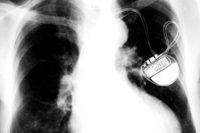Manufacturing a Quality Medical Device
Quality is nonnegotiable in the medical field.

When dealing with medical problems, the medical device should not add to these problems. Medical device manufacturing requires the highest quality—and industry takes no chances with this. Regulations are de rigueur. The need for quality of a bone screw should be obvious, and the same goes for any medical device.
While medical devices in years past may have meant items like stethoscopes or blood pressure cuffs—and these haven’t gone away—a number of innovations in the medical industry such as stents and pacemakers require extremely high levels of quality.
As the devices themselves continue to evolve, so do the regulations surrounding them. Ensuring compliance is never easy, but in the medical device field, it may have gotten a little simpler. Changing medical device manufacturing audits is a multi-year process, but it’s going on now. Medical device manufacturing is an increasingly complex field with one aspect—the audit program—now aiming to be less complicated.
The Medical Device Single Audit Program (MDSAP) is a new program that simplifies the audit process. According to the FDA, “The Medical Device Single Audit Program allows an MDSAP recognized Auditing Organization to conduct a single regulatory audit of a medical device manufacturer that satisfies the relevant requirements of the regulatory authorities participating in the program.”
In other words, one audit can do more. The site goes on to explain that the program allows medical device manufacturers to be audited once for five different medical device markets: Australia, Brazil, Canada, Japan and the United States. Companies are now in the midst of this implementation. And it seems that the program has been well-received so far.
On the FDA site, there are testimonials from industry attesting to the benefits of the MDSAP: “With a Mission to improve the quality of life for patients, prevent progression of chronic diseases, and reduce overall healthcare system costs, ResMed is committed to driving innovation and efficiencies across all aspects of our business. The MDSAP program has allowed us to consolidate the global regulatory assessment process across multiple international locations, reducing internal costs while increasing the overall predictability of these efforts across our global footprint. By minimizing disruption to our business, we can focus on delivering the safest, most effective and technologically advanced products possible.”
Advanced products deserve more advanced audits. There are no shortcuts to good quality, but repeatedly proving your compliance to quality programs can take away from this mission. So how did this program come about? As discussed on the FDA site, the International Medical Device Regulators Forum (IMDRF) noted that a global approach to auditing and medical device manufacturing could improve their safety on an international level. Harmonizing the medical device manufacturing field could be a boon to industry as well as consumers. Making it easier to provide medical devices on a global scale, with fewer audits along the way, benefits manufacturers and the consumers they serve.
In other words, this program aims to make it easier for manufacturers to offer their devices to a worldwide market. As stated on the FDA site, the international partners participating in the MDSAP include: Therapeutic Goods Administration of Australia; Brazil’s Agência Nacional de Vigilância Sanitária; Health Canada; Japan’s Ministry of Health, Labour and Welfare, and the Japanese Pharmaceuticals and Medical Devices Agency; and The World Health Organization (WHO) Prequalification of In Vitro Diagnostics (IVDs) Programme and the European Union (EU) are Official Observers.
BSI, one of the auditing organizations that have worked with the new program, say that feedback about the program’s benefits has been “overwhelmingly positive.” According to the company, “A Single Audit by Auditing Organizations would:
- minimize medical device manufacturer disruptions due to multiple regulatory audits
- provide predictable audit schedules (agenda with opening and completion dates)
- benefit patient health and patient access with ease of entry to multiple markets
- leverage regulatory resources
- incorporate ISO 13485 assessment
- requirements, including Australia, Brazil, Canada, Japan and U.S.
- reduction in time and resource dealing with findings from multiple audits
- reduction in the cost of audits in comparison to independent audits
- improved transparencies in the industry.”
While outside forces do play a large role in the audit process, having good audit processes is something that you can control. Being prepared for the audits—no matter which program you are using—may come down to the right tools. One critical one is audit management software. In particular, being able to streamline audit tasks and centralize audit data is important. With the right tools, you can gain better visibility into audit performance as well as identify potential trends. Maintaining a strong record history becomes easier, as does maintaining compliance with FDA 21 CFR Part 11.
Manufacturing medical devices is an important mission, one that potentially benefits all of us. When your doctor suggests a new device, it’s comforting to know that the device was made to the highest standards. Fewer audits potentially means more time for innovative ideas. The next medical breakthrough could be just around the corner.
Looking for a reprint of this article?
From high-res PDFs to custom plaques, order your copy today!






